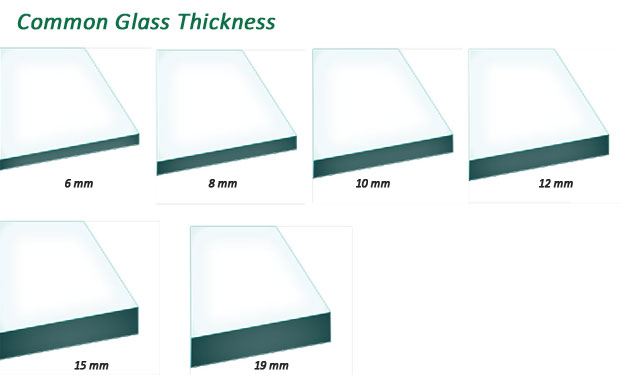Home » Blog » Glass sheet thickness and its applications
Posted on : 06-10-2020 Author : Anirbhan Mahapatra

Glass thickness defines the purpose that it will be used for. Glasses are used in many household items like in photo frames, furniture, interior decor, architecture and in many industrial and laboratory purposes.
1 ~ 1.25 mm : Thin flat piece of glass called microscope slide used to hold objects for examination under a microscope (cannot be tempered).
2 mm glass : Used in photo frames (cannot be tempered)
4 mm glass : Small cabinet door, insulated units, photo frames and small table tops.
5 mm glass : Small table tops, window glass, small bathroom shelves, Shower enclosures (tempered or laminated glass )
6 mm glass : Window glass, interior & exterior door pane, shelves, framed shower doors.
8 mm glass : Glass walls, Shower enclosures doors, shelves, table top glass and partitions.
10 mm glass : Glass walls, Shower enclosures doors, shelves, table tops and partitions.
12 mm glass : Glass doors for larger shower doors, larger shelves, dining and conference table tops, glass walls and partitions
16 mm glass : Glass floors, Very large table tops, very large shelves.
19 mm glass : Glass floors, Very large table tops, very large shelves.
Right thickness is essential for the application of your glass, the most important factor in choosing its thickness, always ask an expert if you are unaware of it, especially when you replacing furniture and shelf glass.
For example, a very small table can have 6 mm glass, a medium coffee table or a teapoy 8mm glass is advisable, when it comes to an ordinary dining table for 4 people we suggest 10mm glass, tables with more seating capacity like 6 or 8 then should go for 12 mm thickness. For a large conference table 16 mm glass can be chosen.
The glass strength is proportional to its thickness, more the thickness Tensile more strength. The capacity of a glass to resist a force tending to stretch it is called Tensile strength. The term is used to denote the force required to stretch a material to break and is known variously as 'breaking load' or 'tensile strength'. When glass is deflected, it has one face under compression and the other in tension. While the resistance of glass to compressive stress is extremely high, its resistance to tensile stress is significantly lower. The resistance to breakage on deflection is in the order of 40 MPa for annealed glass approximately 120 to 200 MPa for toughened glass.